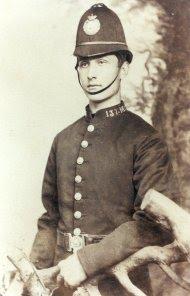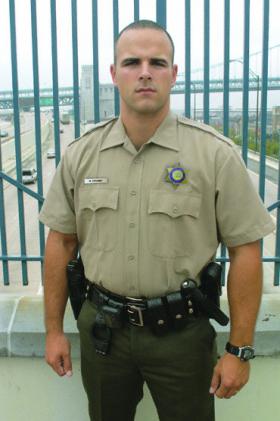 Police in England during the 19th Century first realized the necessity and added benefits of using uniforms while on duty. Uniforms obviously increased visibility and they added credibility to the perception of Law Enforcement by the general public. Uniforms were also used to further emphasize the divide between the military and local police officers. Initially, police uniforms identified the police as separate from the military but appeared to serve a number of other purposes after implementation. The high profile visibility of the Uniformed Police Officer also deterred criminal activity in and of itself, because lawbreakers would curtail their criminal conduct in the presence of an officer and a citizen in trouble could, without any doubt, spot an officer in a multitude of people, and increased the perception of professionalism and trust between the police and civilian population.
Police in England during the 19th Century first realized the necessity and added benefits of using uniforms while on duty. Uniforms obviously increased visibility and they added credibility to the perception of Law Enforcement by the general public. Uniforms were also used to further emphasize the divide between the military and local police officers. Initially, police uniforms identified the police as separate from the military but appeared to serve a number of other purposes after implementation. The high profile visibility of the Uniformed Police Officer also deterred criminal activity in and of itself, because lawbreakers would curtail their criminal conduct in the presence of an officer and a citizen in trouble could, without any doubt, spot an officer in a multitude of people, and increased the perception of professionalism and trust between the police and civilian population.
Tag: history
A History of Sheriffs & the Modern Uniform
 In the United States of America the role of a sheriff varies dramatically between different states and counties. The sheriff is usually a county official, the enforcer of the county court. In urban areas, some sheriffs may be restricted to these court duties, such as overseeing the county jail, courtroom security, detainee transport, serving warrants, service of process or police administration. Sheriffs may also patrol outside of city/town limits or jurisdiction. In many rural areas, sheriffs and their deputies are the principal form of police. It has become increasingly important to be able to differentiate between typical Police Officers and the Sheriff’s office. The iconic sheriff’s uniform does that very job as it is markedly different than the traditional police uniform.
In the United States of America the role of a sheriff varies dramatically between different states and counties. The sheriff is usually a county official, the enforcer of the county court. In urban areas, some sheriffs may be restricted to these court duties, such as overseeing the county jail, courtroom security, detainee transport, serving warrants, service of process or police administration. Sheriffs may also patrol outside of city/town limits or jurisdiction. In many rural areas, sheriffs and their deputies are the principal form of police. It has become increasingly important to be able to differentiate between typical Police Officers and the Sheriff’s office. The iconic sheriff’s uniform does that very job as it is markedly different than the traditional police uniform.
History of EMT’s (Emergency Medical Technicians)
The modern EMT program in the United States began as part of the “Alexandria Plan” in the early 70’s. Emergency medicine (EM) as a medical specialty is a very new idea. It wasn’t until the 1960s and 70s, hospital emergency departments were generally staffed by physicians on staff at the hospital on a rotating basis, among them general surgeons, internists, psychiatrists, and various other types of specialty doctors. What the system lacked was specialized triage type care from the moment the victim is engaged. There was no system to manage Pre-Emergency care. EMS and EMT’s as a specialty occurred as it became increasingly proven that time is the most important factor in a good result after an emergency. Physicians in training (interns and residents), medical graduates from other countries and sometimes nurses also staffed the Emergency Department but the systematic evaluation of the modern Emergency Room and Pre-Emergency room care is a more modern phenomenon.
Continue reading History of EMT’s (Emergency Medical Technicians)


